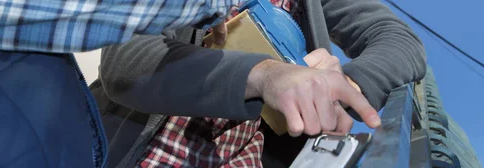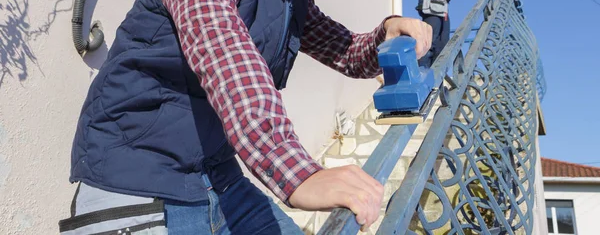A rusty iron railing can detract from the overall appeal of your outdoor space. However, with the right approach, you can transform that dull and rusty railing into an attractive feature once again. Repainting a rusty iron railing is a straightforward process that not only enhances its aesthetic appeal but also prolongs its lifespan. In this article, we will provide you with a step-by-step guide on how to re-paint a rusty iron railing.
Materials and Tools:
Before you begin, gather the necessary materials and tools:
- Safety goggles, gloves, and a dust mask
- Wire brushor steel wool
- Sandpaper (medium and fine grit)
- Rust converter
- Primer suitable for metal surfaces
- Exterior-grade paint (color of your choice)
- Paintbrushes and/or rollers
- Drop cloths or plastic sheets for protection
- Mineral spirits or paint thinner for cleanup
Preparing the Railing:
- Ensure safety:Put on safety goggles, gloves, and a dust mask to protect yourself during the process.
- Clear the area:Remove any nearby objects or furniture and cover the ground with drop cloths or plastic sheets to prevent paint splatters.
- Remove loose rust and paint: Use a wire brushor steel wool to scrub away any loose rust or peeling paint from the railing, paying attention to heavily rusted areas.
- Smooth the surface:Use medium-grit sandpaper to smoothen the surface of the railing after removing loose rust and paint. Follow up with fine-grit sandpaper for a smoother finish to help the paint adhere better.
- Treat the rust:Apply a rust converter according to the manufacturer’s instructions. This product chemically converts any remaining rust into a stable surface, preventing further corrosion.
- Clean the railing:Wipe down the railing with a damp cloth or sponge to remove dust and debris. Ensure that it is completely dry before proceeding.
Priming the Railing:
- Choose a suitable primer:Select a primer specifically designed for metal surfaces to provide excellent adhesion and corrosion resistance.
- Apply the primer:Use a paintbrush or roller to apply an even coat of primer to the entire surface of the railing. Follow the manufacturer’s instructions regarding drying time between coats.
- Allow the primer to dry:Give the primer ample time to dry, usually a few hours. Refer to the product label for specific drying times.
- Inspect the surface:After the primer has dried, inspect the surface for any missed spots or imperfections. Touch up any areas as needed with additional primer.
- Optional sanding: For an ultra-smooth finish, lightly sand the dried primer with fine-grit sandpaperto create a perfect base for the final paint coats.
- Clean the surface: Remove any dust or debris resulting from sanding. Wipe the surface with a clean, dry cloth or tack cloth to ensure a clean painting surface.
Applying the Paint:
- Choose the paint: Opt for an exterior-grade paint suitable for metal surfaces in the color of your choice.
- Apply the first coat:Using a paintbrush or roller, apply an even coat of paint to the railing. Begin from the top and work your way down, ensuring thorough coverage with smooth, even strokes to prevent drips and runs.
- Allow it to dry:Let the first coat of paint dry completely according to the manufacturer’s instructions, usually a few hours. Refer to the paint can for specific drying times.
- Apply additional coats (if needed):Depending on the desired finish and coverage of the first coat, apply additional coats of paint following the same process of even application and drying between coats.
- Inspect the finish:Once the final coat is applied and dried, carefully inspect the railing for any missed spots or imperfections. Touch up these areas with a small brush or roller as needed.
Maintenance Tips:
To ensure the longevity and beauty of your repainted iron railing, follow these maintenance tips:
Regular cleaning: Periodically clean the railing with a mild detergent and water to remove dirt and grime.
Avoid abrasive cleaners: Steer clear of harsh chemicals or abrasive cleaners that could damage the painted surface.
Inspect for rust or damage: Regularly inspect the railing for signs of rust or damage. If you notice any issues, promptly address them to prevent further deterioration.
Touch-up when necessary: Keep some leftover paint for touch-ups in case the railing gets scratched or chipped.
Apply a protective coating: Consider applying a clear protective coating over the paint to provide an additional layer of protection against the elements.
Maintain a clean surrounding area: Keep the area around the railing clean and free of debris that could potentially cause damage or corrosion.
Conclusion:
Repainting a rusty iron railing is a rewarding project that can revitalize the appearance of your outdoor space. By following the step-by-step guide provided, you can transform a rusty and worn-out railing into a visually appealing feature. Remember to prioritize safety, properly prepare the surface, use quality materials, and allow sufficient drying and curing times. With regular maintenance and care, your repainted iron railing will continue to enhance the beauty of your outdoor area for years to come.


